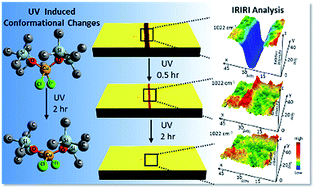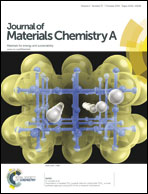UV-induced self-repairing polydimethylsiloxane–polyurethane (PDMS–PUR) and polyethylene glycol–polyurethane (PEG–PUR) Cu-catalyzed networks†
Abstract
UV-induced self-repairing polydimethylsiloxane–polyurethane (PDMS–PUR) crosslinked networks capable of repairing mechanical damage upon UV exposure were developed. Induced by the presence of the copper chloride (CuCl2) catalyst, the network remodeling and bond reformation are achieved by the formation of Cu–O coordination complexes, covalent Si–O–Si hydrolysis with subsequent bond reformation. Upon UV exposure, Cu–O complexes undergo tetrahedral-to-distorted tetrahedral rearrangements which parallel the Si–O bond reformation. When PDMS was substituted with OH-terminated polyethylene glycol (PEG) to form PEG–PUR crosslinked networks, square planar-to-tetrahedral rearrangements occur during the damage–repair cycle. Alkyl backbone distortions and segmental motions induced by the local Cu–O symmetry changes result in volume changes of the metal–ligand complex center. These studies show that a combination of supramolecular and covalent bonds facilitates self-repairing.


 Please wait while we load your content...
Please wait while we load your content...